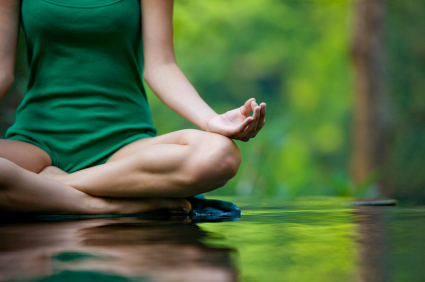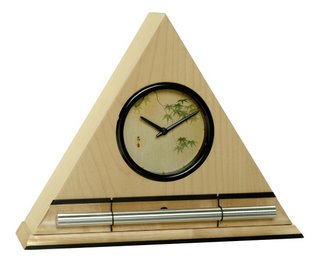
meditation 101
Meditation is often something thought of as a practice reserved for monks or the spiritual elite. Happily, this is far from the truth.
It’s been said that there are many paths up the mountain of meditation. We are living in a time where the mountain is closer and more accessible than it’s ever been. With the presence of the Internet and the ever-expanding global village, we have access to many paths that were far beyond reach only years ago. The seeker today has access to an unlimited wealth of information. With the click of the mouse you can access meditation techniques that are commonplace in remote parts of the world.
A really cool thing about living in our time is science and spirituality finding common ground. Today we have the science to quantify the benefits of meditation that the practitioner previously had to take on faith alone. Western medicine has traditionally shied away from mediation as a “prescription,” but now that there is concrete, scientific evidence proving the benefits of meditation, we are seeing the mainstream medical community look to mediation as a viable treatment option for a number of conditions and illnesses.
Let’s take a quick look at what science has shown us about our brainwaves: Every day, your brain is constantly operating on various wavelengths. While you are awake and interacting with others, you are in the Beta wavelength, at about 14 to 30 cycles per second (or hertz). When you get into the Alpha waves, you are still alert and paying attention, but get into a relaxed and calm state while your brain is at 9 to 13 hertz. When you get even more relaxed—and sometimes zoned out—you are in the Theta waves at about 4 to 8 hertz; we call this the meditative state. When you go further into a deep sleep, you are in the Delta waves at 1 to 3 hertz.
When it comes to dealing with stress, in many ways our brain is operating on the same basic circuitry as our ancient ancestors the cavemen, with a primal “fight, flight, or freeze” reaction to stress/ danger. Our caveman brain can be triggered by stress—even perceived stress that may or may not be real—with a primal: “Oh my God! I’m being chased by a saber-toothed tiger!” Cortisol and adrenaline are then pumped into our systems, we experience a rise in glucose levels, and we are able to flee or fight the danger. If we take flight or fight, our bodies break down those chemicals— this is the original design of the flight response. When we are stuck in this position, all of our rest, digest, repair, and reproductive systems take a back seat to the emergency.
Unfortunately, the reality of our modern lifestyle is that most of us are sitting at a desk being chased by something like a deadline or the perceived danger of job loss (not by an actual saber toothed tiger), but our brains react much the same way and those chemicals in our bodies turn into figurative shards of glass when they’re not being burned off by exercise.
So, how do we dissolve those shards and deal with the stress? There are many ways to do this, while exercise is one of the best ways to burn off the chemicals once they are unleashed, meditation is one of best preemptive methods for staying centered and being able to ask ourselves “Is this really a saber-tooth tiger chasing me?” We’ll talk later about slowing down our thoughts, but first, let’s look at how that meditative state in the Alpha/Theta brainwave pattern brings our bodies and some of those chemicals back into balance.

meditation
When you meditate, you body releases DHEA (a chemical that promotes relaxation, memory, and reduces cardiovascular disease risk), serotonin levels rise and your blood pressure starts todrop. In meditation you are completely awake and alert, but at the same time still and quiet, coming into full consciousness of the present moment. Meditation brings us to a depth within ourselves where we can access our inner compass and our deep, inner calm: that place of peace and awareness we alreadyhave.
Take this metaphor by David Fontana, PhD: The sky itself is our true nature and true self, but there are clouds in the sky obscuring our view. The clouds represent our “monkey mind” or our constant mental chatter. In our normal Beta state, the clouds of our thoughts, worries, hopes, and fears are continually obscuring our view, and it is all but impossible to see the sky for what it is. Meditation is our tool to clear away the clouds and experience the vastness of the sky, and the vastness of our true being.
How to Meditate
One of the first things you want to do is decide on a place, time, and position for meditation. Ask yourself: What’s the best time of day for me? What is my commitment level? Can I make a commitment to do it at this time, every day? Will it be for 10 minutes, 20 minutes? How long will I commit to this? Will it be 10 days, 30 days, 60 days?
Write down your answers and journal about it. Then mark your calendar and note how you felt on the days you meditated. Writing these things down will keep you more accountable and set you up for continued success.
Find the spot you’re going to meditate in, but make sure it’s not a spot that you watch television in, or do anything else. When you train your body to recognize that “this is where I meditate,” you are supporting your meditation with a physical habit that your body recognizes.
Also think of bells and smells. Find the things that make your space sacred, create an ambiance that signifies that this is your space for meditation. Ask yourself: Do I need sound? Do I need candles or incense? Start with what you’re attracted to and find those things that resonate with you.
Once you’ve found your place, be sure to sit with your head, neck, and spine in alignment. In this position, you minimize the stress level for your body because it doesn’t have to work as hard to maintain balance. This position also allows you to be open to relaxation and minimizes your chances of falling asleep.

how to meditate
Now that you’ve found the place and time to meditate, let’s talk about the nature of your mind. It has never been trained to meditate and it’s natural that it will try to rebel. St. Teresa of Ávela said the mind before meditation is like a wild horse. When you decide to meditate, the mind attempts to buck you off and do everything it possibly can to keep you from “breaking” it. If you stay on it until you break it, that horse (your mind in meditation) will do you a great service.
I’ve found the major roadblocks for people who are just beginning a meditation practice tend to fall into two categories: those that think they need to be perfect at meditation and give up because they’ miss a day or two, or feel they should have the mind of a monk with no distractions after just a few attempts. Or there are those on the opposite end of the spectrum who are sporadic about their practice and wonder why the benefits haven’t shown themselves. So when you begin meditation, expect that your mind is going to be like an untrained horse.
I find it’s best to set yourself up for success by starting with a short, 10- minute meditation. Meditating can be overwhelming for those who start with 30-minute meditations (or more), because the wild, untrained horse of your mind can be bucking and challenging you the entire time. Ten minutes is enough for people to start training
themselves for meditation and feeling a little bit of success—like it’s working.
Think of meditation like exercise: You wouldn’t expect yourself to go into a gym and lift 150 pounds on your first try. You have to start with 10 pounds first and train up to it. It’s the same with meditation, and the 10-minute mark seems to be a great starting point. When you first start to meditate, your brain usually goes off in different directions: to your grocery list or reminding you that you need to stop at the gas station on the way home. It’s a typical reaction for the “critic” in you to say “Oh no, I’m not meditating! I knew I couldn’t do this.” Instead of giving up, bring yourself back to center by focusing on your breath. At this point, you’re already in the driver’s seat of consciousness or you wouldn’t have noticed that you were distracted. Each time you catch yourself drifting off and bring yourself back to center, you are developing a muscle in your mind. Just like any other muscle, it needs to be trained, and this muscle will benefit you in countless ways.
Once you are able to reach this meditative state, you become the master of your mind (instead of a slave to it) and are able to push away the clouds of your monkey mind.
Many Ways to Meditate
Again, I bring us back to the parallel of exercise: Once you decide to embark on an exercise program, there are many different activities you can choose from and many classes you can take (aerobics, yoga, swimming, weight lifting, and jogging to name a few). You may try many until you find one that fits. Embark upon your mediation practice in much the same way: Try different types of meditation until you find one that resonates with you and that you feel you can practice for a time.
There are many different paths up the mountain of meditation within the great traditions of Buddhism, Taoism, Hinduism, Sufi, and Kabbalah (amongst many others), and the newer western traditions, as well. The list below is by no means comprehensive, but rather a quick snapshot to get you thinking about where to begin your meditation journey. In addition to seeking out places of worship, you can also find many great, guided meditations from our modern masters.

guided meditation
Guided meditation: This can be a visual or an auditory meditation that can inspire a set of images, feelings, smells, or sounds. This is a great place to start it helps to give you a place of focus and you can follow the image through, rather than trying to simply come to silence and stay there. That is sometimes too abstract of an idea for some people to grasp. It is also very helpful for those whose monkey mind likes to go crazy.
Mindfulness meditation: This style, derived from the Buddhist discipline called vipassana, is the practice of staying in the present and being in the seat of consciousness (remember the driver’s seat from before?), and being the observer of the thoughts and pictures that pass through your mind. The goal is allowing those thoughts pass without being attached to them.
Transcendental Meditation™: This style, made popular by Maharishi Mahesh Yogi, gives you an individual mantra (or “meaningless phrase”) that serves as the vehicle to get you to that place of deep peace and meditation.
Moving Meditation: For those that find it very difficult to sit still, there are forms of meditation that involve movement. These can be tai chi, qi gong, or yoga asanas. Both tai chi and qi gong combine slow, purposeful movement while focusing on a conscious direction of energy flow throughout the body.
What benefits can I get from meditation?
Benefits may seem slow to come and are subtle at first, but are long lasting and very effective. Just like exercise, you’re not going to see the changes in your body right away, but if you keep with it, you know you will reap the benefits. It’s the same with meditation.
There are many benefits to practicing meditation, many of which have been scientifically documented and studied. In future issues of Natural Solutions, we will cover some of these benefits and specific meditation techniques. No matter which technique you choose to follow, you can expect to receive the basic benefits listed below.
Slowing Down. One of the immediate benefits experienced through meditation is that you will be able to slow down and be conscious of your thoughts. Many times we assume the thoughts in our mind are real because we perceive and experience them. When we slow down our thoughts (especially those of stress and danger) and we look at our self-talk while we are flipping out, we are using that muscle in our mind we developed that allows us to be in the driver’s seat and examine our thoughts. Challenge them and ask yourself if those thoughts are helpful to you.

how to meditate
Responding to Life. After meditating for a while, you start to respond instead of reacting to life. The term “react” is a monkey-mind or knee-jerk reaction. To “respond” is to actually think about act consciously. Practicing meditation puts you in a position where you can take a breath, and actually respond to people and situations, especially those that are stressful or challenging.
In Tune. A long-term benefit of meditation is that you are able to be in line with yourself and the world around you. You are way more alert and in a more peaceful state of being. Not to mention that you will have lower blood pressure, reduced risk of cardiovascular disease by increasing circulation, reduced insulin resistance, reduced mortality rates, and reduced heart-rate variability. In some ways, it’s the perfect antidote to the amount of stress we have in our daily lives.
Jill Englund has a Bachelor of Science degree in metaphysics, and for the last ten years has helped organizations and individuals achieve their goals through guided imagery, creative visualization, and meditation in Minneapolis, Minnesota. Her guided mediations can be found at steps2wellbeing.com.
Although meditation can be done in almost any context, practitioners usually employ a quiet, tranquil space, a meditation cushion or bench, and some kind of timing device to time the meditation session. Ideally, the more these accoutrements can be integrated the better. Thus, it is conducive to a satisfying meditation practice to have a timer or clock that is tranquil and beautiful. Using a kitchen timer or beeper watch is less than ideal. And it was with these considerations in mind that we designed our digital Zen Alarm Clock and practice timer. This unique “Zen Clock” features a long-resonating acoustic chime that brings the meditation session to a gradual close, preserving the environment of stillness while also acting as an effective time signal. The Digital Zen Clock can be programmed to chime at the end of the meditation session or periodically throughout the session as a kind of sonic yantra. The beauty and functionality of the Zen Clock/Timer makes it a meditation tool that can actually help you “make time” for meditation in your life.

meditation timers and tools by Now & Zen, Inc.
Now & Zen’s Acoustic Meditation Timer Shop
1638 Pearl St.
Boulder, CO 80302
(800) 779-6383
Posted in Meditation Timers, Meditation Tools, mindfulness practice